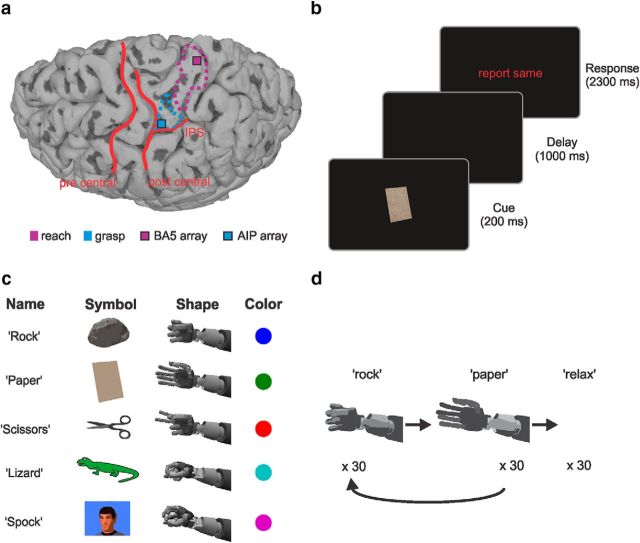Figure 1.
Implantation site and schematic overview of tasks. a, MRI of the implantation site for the BA5 and the AIP array. Some characteristic sulci are overlaid in red for better orientation. The most active regions from the fMRI task (see “fMRI task and array locations”) are outlined for reaching (purple) and grasping (light blue). b, Sketch of task progression showing the three distinct phases of cue presentation, delay, and response with their respective lengths. c, Table listing the names of the hand shapes (which also correspond to the auditory cues given in the CC task), their symbolic representations on the screen, corresponding hand shapes (as performed by the robotic arm), and the color code used for cue-based analyses. d, Schematic sketch of the GT task. The robotic hand would alternate between the two hand shapes rock (closed hand) and paper (open hand) for 60 trials total, and after that 30 relaxation trials would follow (see “Online control and grasp training task”).

